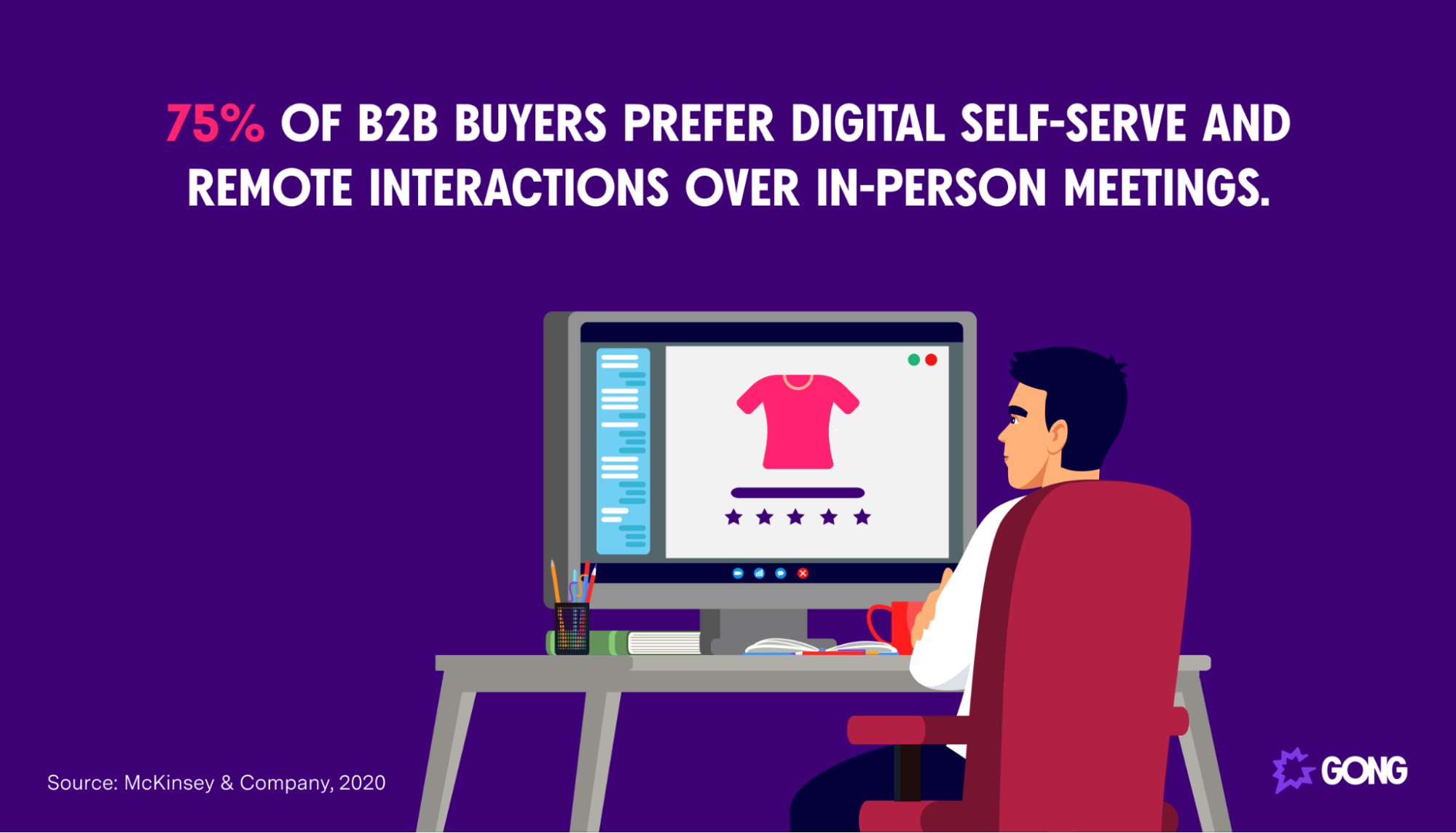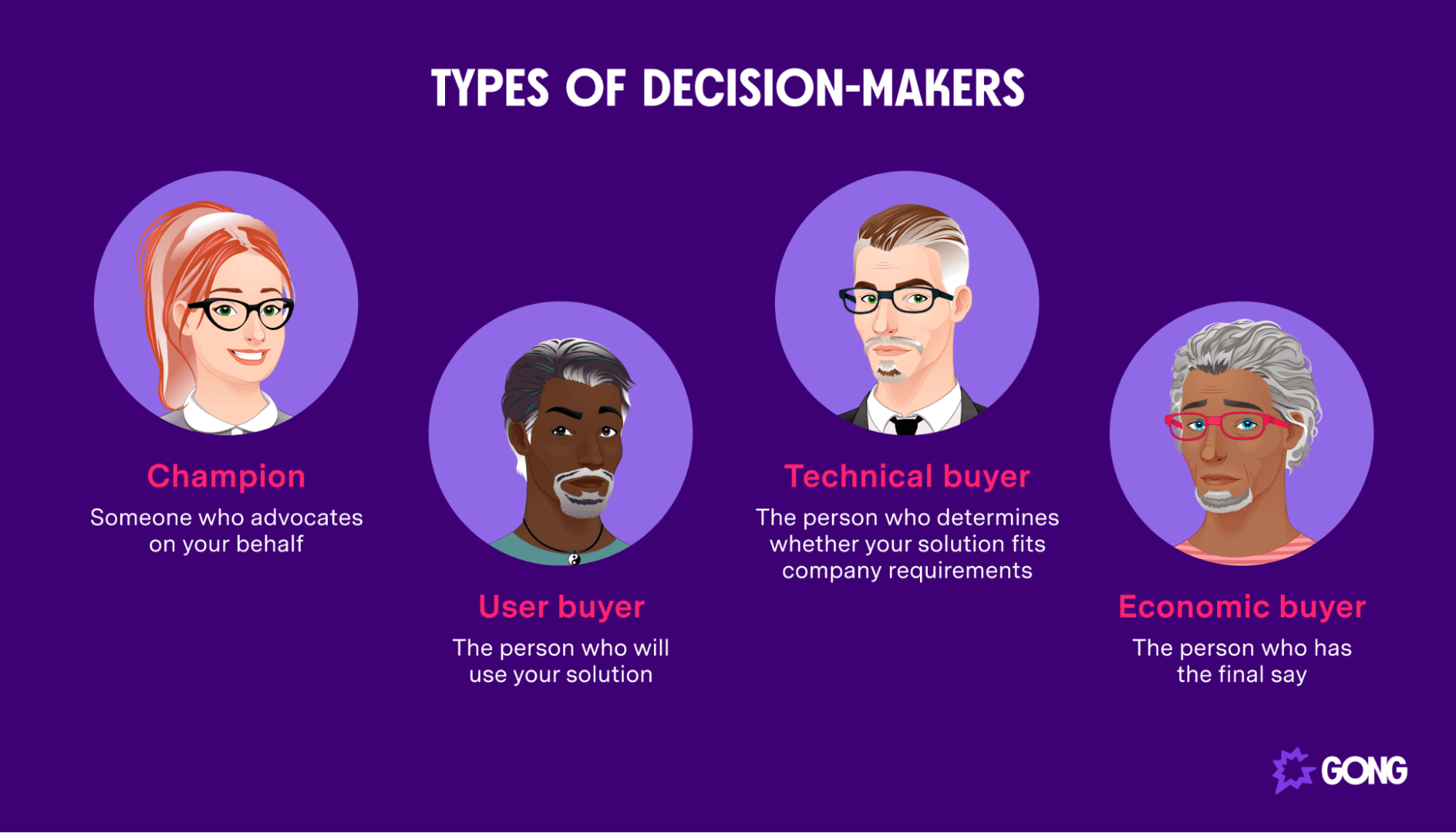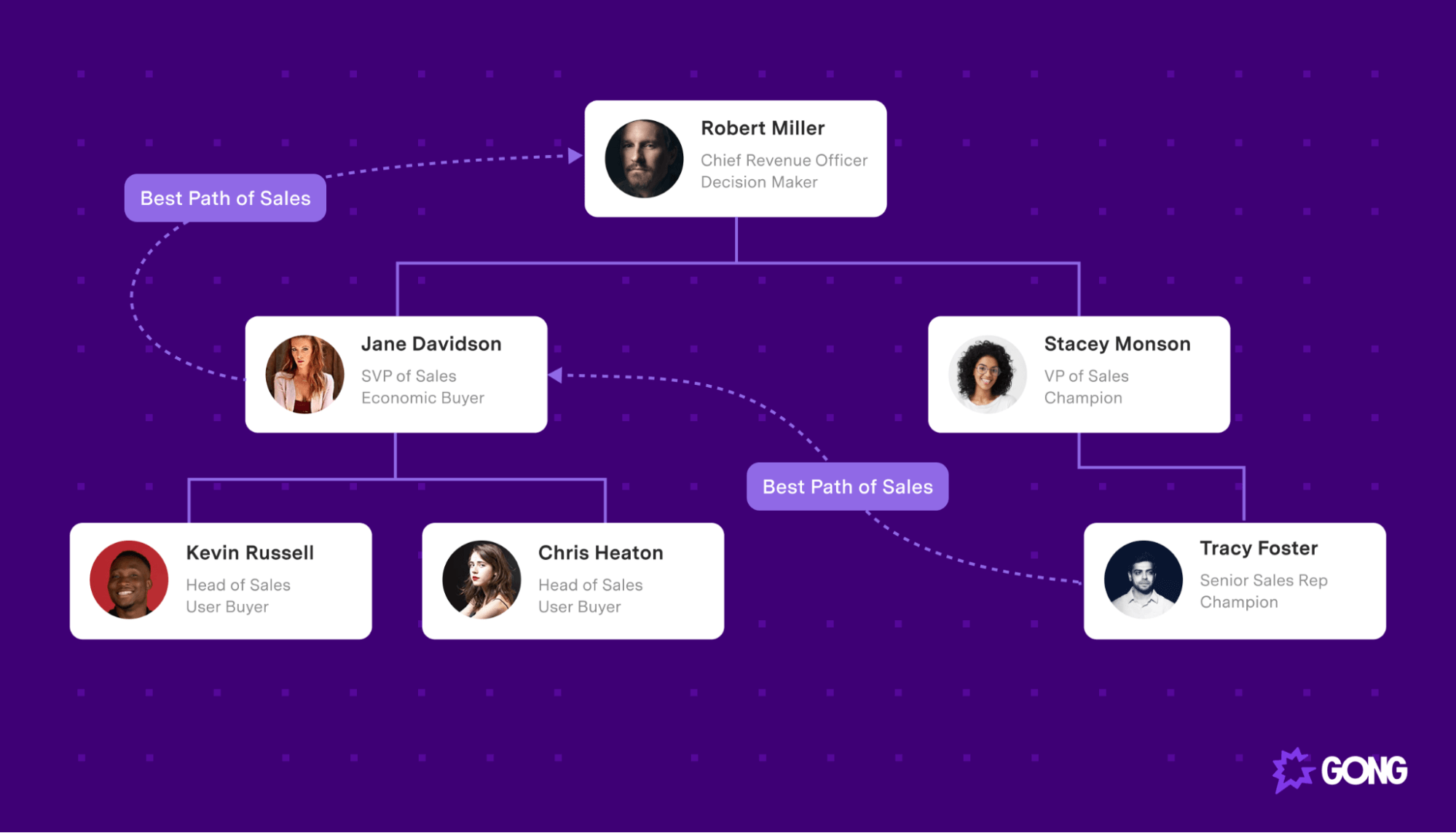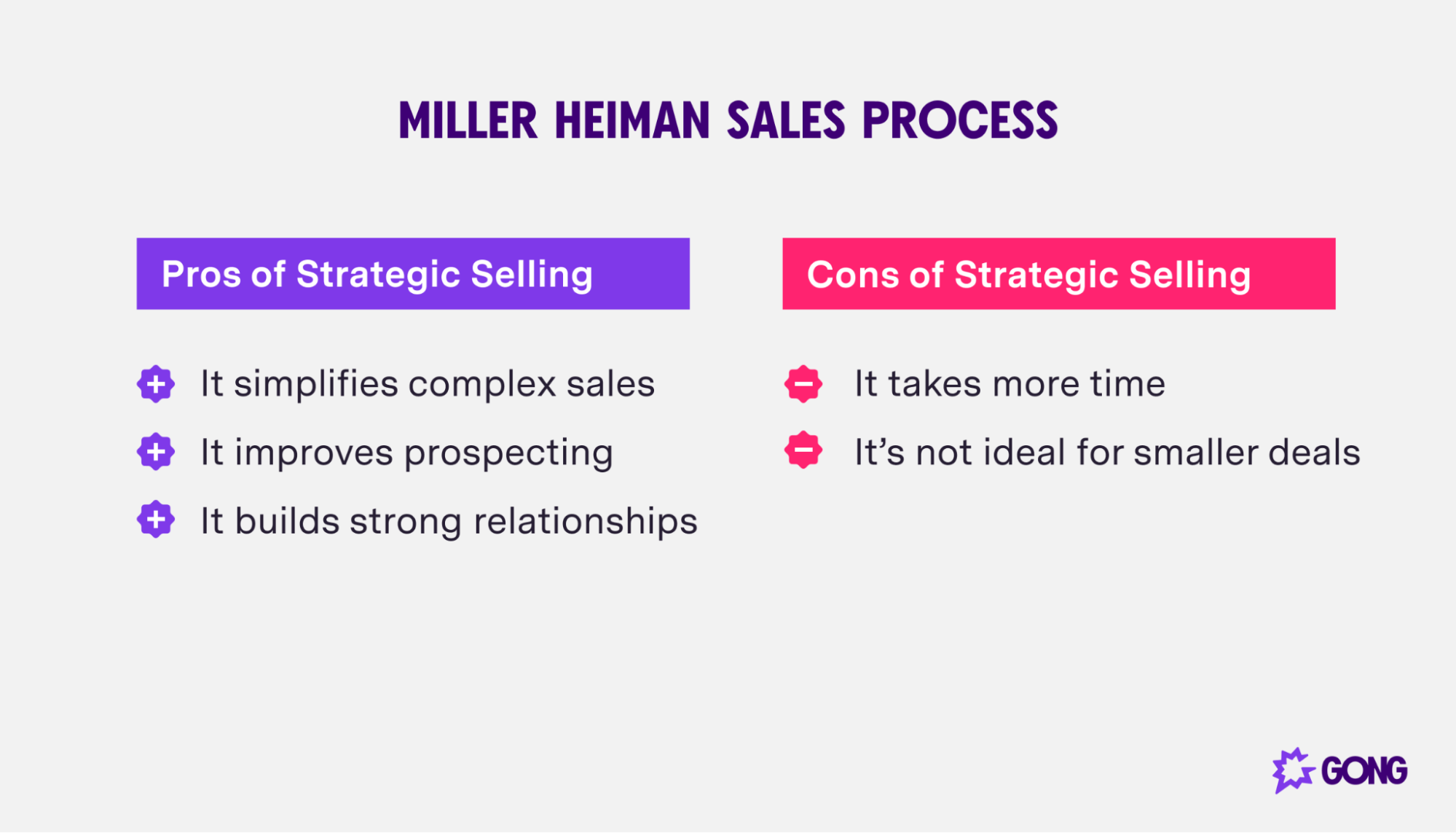Is the Miller Heiman Sales Process Right For You?
The thought of closing a large enterprise deal with more than one decision-maker involved can sound intimidating. There’s a lot on the line, and one misstep could cost you the deal.
Fortunately, there’s a sales methodology that can help.
Enter the Miller Heiman sales process — a framework that helps your team manage and close complex B2B deals.
In this article, we’ll explain the Miller Heiman sales process in detail, including what it is and what sets it apart from other sales methodologies. We’ll also look at how you can implement it into your sales process.
What is the Miller Heiman sales process?
The Miller Heiman sales process is a B2B sales methodology developed by Robert Miller and Stephen Heiman. It’s also known as the Miller Heiman Strategic Selling methodology.
The Miller-Heiman framework offers sellers a more effective way to close enterprise sales — deals that involve large decision-making groups and long sales cycles. It helps you identify key decision-makers and understand their attitudes so you can tailor your message accordingly.
What sets the Miller Heiman sales process apart?
The Miller Heiman sales process has three premises at its core. Understanding them is essential to successfully implementing this sales methodology.
Premise 1: “Whatever got you where you are today is no longer sufficient to keep you there.”
Translation: Change is constant.
The sales world has seen drastic changes in the last few years alone.
Face-to-face interactions were fairly common in B2B sales. However, due to the lockdowns and travel restrictions caused by the pandemic, buyers and sellers were forced to engage on digital channels.
But even as much of the world returns to normal life, 75% of B2B buyers now say they prefer digital self-serve and remote interactions over in-person meetings.

The Miller Heiman sales process acknowledges that best practices today may not be best practices tomorrow. Organizations must continuously revisit their processes to remain competitive.
Premise 2: “In complex sales, a good tactical plan is only as good as the strategy that led up to it.”
Translation: A solid sales strategy is a must.
There’s no shortage of sales tactics — stating your full name to command respect, giving the reason why you’re calling, labeling your buyers’ emotions, etc.
Sales tactics are great because they take out much of the guesswork in the sales process. How should I introduce myself? How can I get prospects to stay on the call? How can I position myself as a trusted advisor?
The right tactics can help your reps answer these questions before moving forward. But tactics alone aren’t enough when you’re dealing with complex sales.
The second premise of the Miller Heiman sales process is all about having a solid sales strategy in place — one that guides and empowers your reps to hit their objectives.
Premise 3: “You can succeed in sales today only if you know what you’re doing and why.”
Translation: Invest in sales training to stay competitive.
Competition is fierce in any market. Equipping your team with the right sales training will help them build the skills and confidence they need to close bigger deals.
Having reps go through a sales onboarding plan is a good start. But it’s also important to deliver ongoing coaching to help your reps reach their full potential.
Now let’s take a closer look at each step of the Miller Heiman Strategic Selling methodology.
How does the Miller Heiman sales process work?
Complex sales aren’t like typical transactions. These are larger deals that have multiple decision-makers and longer sales cycles.
Follow these steps to implement the Miller Heiman sales process:
1. Understand your current position
65% of B2B buyers choose a vendor because they have a strong knowledge of the solution area and overall landscape. Successful sellers aren’t just familiar with their own solution — they also know how to position it against the competition.

You’re not the only player on the market.
Understanding how you stack up against the competition is a major part of the Miller Heiman sales process. Reps need to understand what differentiates your solution so they can position their pitches accordingly.
Make sure your reps are well-versed in everything related to your competitors — who they are, what they offer, what problems they solve, etc.
Create sales battle cards if you haven’t already.
Sales battle cards are resources that compare your company’s solution to its competitors. They contain information like pricing, product features, and strengths and weaknesses. A comprehensive battle card can help your reps prepare for their sales calls and craft better pitches.
Download our Sales Battle Card Template For Ultra-Competitive Deals to create battle cards that will help you build a strong case against your competition.
2. Categorize your decision-makers
The Miller Heiman sales process recognizes that enterprise deals typically involve many stakeholders — each with a different level of influence over the decision-making process.
This isn’t just conjecture, either. More than half (63%) of B2B purchases involve more than four decision-makers, and they include different roles across multiple departments.
According to the Miller Heiman sales process, we can categorize decision-makers into one of four categories: champions, user buyers, technical buyers, and economic buyers.
Champion
Champions advocate on your behalf. They want you to win, so they’re willing to give you “insider” information on their decision-making process.
User buyer
User buyers are the direct end-users of your solution. While they may not have the final say, it’s still important to get them on your side.
Technical buyer
Technical buyers check that your solution meets and complies with the company’s requirements. Technical buyers could include buyers from IT, HR, or other departments.
Economic buyer
Economic buyers have the authority to approve a deal. These buyers are typically the hardest to convince, but winning their support is critical.

Research your prospects’ companies on LinkedIn and ask the right sales discovery questions to identify these individuals.
3. Determine your buyer’s attitude
Once you’ve identified the decision-makers at the company you’re targeting, the next step is to determine their attitudes. This will help you craft a more compelling pitch.
There are four buyer attitudes.
Growth
Buyers with a ‘growth’ attitude aren’t happy with their current solution — maybe it doesn’t perform as well or lacks certain features. They’re ready to change the status quo.
These types of buyers want to hear about your solution’s growth potential. How will it make their team more productive? How will it save them more time?
Trouble
Buyers with a ‘trouble’ attitude have a problem they want to solve as quickly as possible. Identify their pain points and explain how your solution addresses them to win them over.
How exactly does your solution address the specific problem they’re having?
Even keel
Buyers with an ‘even-keel’ attitude are more neutral.
They have more of an “everything is fine” mindset and don’t see the need to change anything. Show them the unseen growth potential of your solution to convert them.
Overconfident
Buyers with an ‘overconfident’ attitude are more resistant to change.
Winning their support will be significantly harder because they’re happy with the status quo. You’ll likely need to enlist the help of senior buyers.
4. Evaluate red flags and objections
Every deal has red flags or hurdles that could derail it. The key to successfully navigating these hurdles is to identify and overcome them early on.
For example, missing buyer information is an automatic red flag according to the Miller Heiman Strategic Selling methodology. If you don’t know a buyer’s role, the tools they use, or their pain points, your chances of closing the deal are slim.
The good news is you can bridge this knowledge gap by researching your prospects. Use resources like LinkedIn and Crunchbase to learn as much as you can about your buyers.
Another example of a red flag is if an organization restructures itself in the middle of a deal. If this happens, the buyers you previously engaged with may no longer be involved in the decision-making process.
Create an account map to help you keep track of the key players involved in a sale.

Be sure to update the account map as your buyers change roles (or leave the company).
These are just two examples of potential red flags to look out for. Identify potential hurdles early on and keep them top of mind so you’ll be in a strong position to handle them.
5. Influence your buyers’ decisions
The closing stage is the final step of the Miller Heiman sales process. However, how you deliver your sales pitch will depend on who you’re talking to and their attitude.
For example, an economic buyer with a growth attitude will be an easy sell. Understand what’s most important to them and highlight the growth potential of your solution to win them over.
In contrast, a user buyer with an overconfident attitude will be a harder sell. Dig deep to uncover unidentified pain points, and position your solution accordingly. In some cases, you may need to loop in other decision-makers.
Whether you’re working with a technical buyer with a trouble attitude or an overconfident economic buyer, formulate a strategy and personalize your sales outreach.
Most importantly, aim to create a “win result” — where both the buyer and seller win. This occurs when you deliver value throughout the entire sales cycle and align your solution to your buyer’s needs. Getting this result is key to retaining buyers and generating repeat sales.
There you have it — a full breakdown of the Miller Heiman sales process. Now let’s look at whether this methodology is right for your company.
Is the Miller Heiman sales process a good fit for your team?
Weighing the pros and cons of the Miller Heiman sales process can help you decide whether you should adopt this sales methodology.

Pros of strategic selling:
- It simplifies complex sales: Complex sales are, well, complex. The Miller Heiman sales process provides a structured framework to help your reps identify and sell to each decision-maker.
- It improves prospecting: The Miller Heiman Strategic Selling methodology encourages reps to research prospects. This can improve your sales prospecting and help your company attract more qualified buyers.
- It builds strong relationships: The Miller Heiman sales process focuses on building relationships with various stakeholders. Why is this important? Because when you involve the right decision-makers, you’re more likely to close the deal.
Cons of strategic selling:
- It takes more time: The Miller Heiman sales process is rather research-intensive. It requires reps to research and personalize pitches for each prospect.
- It’s not ideal for smaller deals: Unless you’re mostly dealing with large enterprise deals, this sales methodology is likely overkill. It may also leave your reps feeling frustrated because of the extra work they have to put in.
So should you adopt this methodology?
Ultimately, that’s up to you to decide.
But if you regularly deal with complex sales and operate in a competitive market, then the Miller Heiman Strategic Selling methodology could be a good fit for your team.
Elevate your Miller Heiman strategic selling with Gong
B2B sales are more complex than ever.
Not only do they involve more decision-makers, but they also have longer sales cycles. You need to equip your reps with the right framework to navigate these types of deals.
Consider implementing the Miller Heiman sales process. This process offers a framework for building long-term relationships with key decision-makers and influencing their decisions.
If you’re adopting a new methodology, it’s important to monitor that methodology’s performance.
Gong’s sales enablement platform captures and analyzes buyer-facing interactions. It helps you identify which parts of the Miller Heiman methodology your team needs help with.
Schedule a demo to see how Gong can help you implement the Miller Heiman sales process and reinforce key principles.
